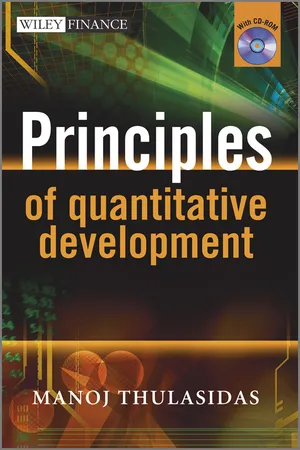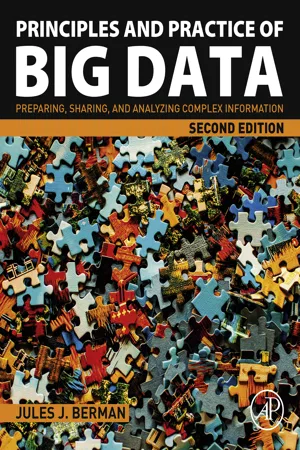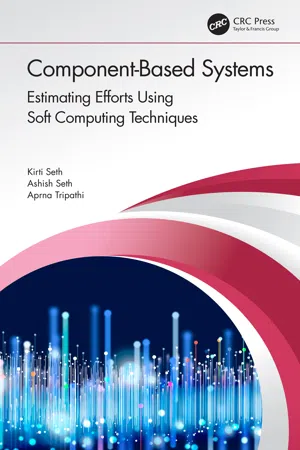Inheritance in Oops
In object-oriented programming, inheritance allows a new class to inherit properties and behaviors from an existing class. This promotes code reusability and allows for the creation of a hierarchy of classes. The derived class (or subclass) inherits the attributes and methods of the base class (or superclass), and can also have its own unique attributes and methods.
6 Key excerpts on "Inheritance in Oops"
- eBook - ePub
- Bill Sempf, Charles Sphar, Stephen R. Davis(Authors)
- 2010(Publication Date)
- For Dummies(Publisher)
...Chapter 6: Inheritance: Is That All I Get? In This Chapter Defining one class in terms of another, more fundamental class Differentiating between is a and has a Substituting one class object for another Constructing static or instance members Including constructors in an inheritance hierarchy Invoking the base class constructor specifically O bject-oriented programming is based on four principles: the ability to control access (encapsulation), inherit from other classes, respond appropriately (polymorphism), and refer from one object to another indirectly (interfaces). Inheritance is a common concept. I am a human, except when I first wake up. I inherit certain properties from the class Human, such as my ability to converse, more or less, and my dependence on air, food, and carbohydrate-based beverages with lots of caffeine. The class Human inherits its dependencies on air, water, and nourishment from the class Mammal, which inherits from the class Animal. The ability to pass down properties is a powerful one. You can use it to describe items in an economical way. For example, if my son asks, “What’s a duck?” I can say, “It’s a bird that quacks.” Despite what you may think, that answer conveys a considerable amount of information. My son knows what a bird is, and now he knows all those same characteristics about a duck plus the duck’s additional property of “quackness.” Object-oriented languages express this inheritance relationship by allowing one class to inherit properties from another...
- eBook - ePub
- Manoj Thulasidas(Author)
- 2012(Publication Date)
- Wiley(Publisher)
...The object interacts with the rest of the program through a set of published interfaces. The private data and the internal implementation methods are all hidden from the view of its users. The immediate benefits to the programmers, both to the users of the object as well as the developers of the class, is that as long as they honour the interface, they can make modifications both within and outside the class without affecting each other. This benefit translates to perfect modularity at the class level. It also puts enormous demands on the care needed to define the interfaces. Object-oriented languages also support inheritance, which makes the hierarchical ordering of classes a breeze. In our product example, we have the name and description members. However, these attributes also apply to the objects of other classes such as models and parameters. We can therefore define a base class (say ‘ thing ’) to handle these attributes along with the methods to set and display them. Other classes then inherit ‘ thing ’ without worrying about how to handle these common attributes. Inheritance greatly improves modularity. In our example, suppose we want to add another attribute, say a comment, to all objects derived from the base class thing. We can do that by modifying only the base class, without touching any of the derived classes. Another feature of the OOP paradigm is polymorphism, which lets the programmer treat all derived classes originating from a base class on an equal footing. In Figure 5.1, for instance, in an OOP implementation, the programmer could cast all the trades to its base trade class, put them in an array or a vector, loop over them and call the price method for each. The right price method, as implemented in the derived trade class, will be invoked, providing an elegant solution to our earlier problem, without resorting to ugly run-time checks...
- eBook - ePub
Logic and Critical Thinking in the Biomedical Sciences
Volume I: Deductions Based Upon Simple Observations
- Jules J. Berman(Author)
- 2020(Publication Date)
- Academic Press(Publisher)
...This is the beauty of object-oriented programming. If the object-oriented programming language is constrained to single parental inheritance (e.g., the Ruby programming language), then the methods available to the programmer are restricted to a tight lineage. When the object-oriented language permits multiparental inheritance (e.g., Perl and Python programming languages), a data object can have many branched ancestral classes spread horizontally and vertically through the class libraries. 5 – 8 Freedom always has its price. Imagine what happens in a multiparental object-oriented programming language when a method is sent to a data object, and the data object’s class library does not contain the method. The programming language will look for the named method in the library belonging to a parent class. Which parent class library should be searched? Suppose the object has two parent classes, and each of those two parent classes has a method of the same name in their respective class libraries? The functionality of the method will change depending on its class membership (i.e., a “close” method may have a different function within Class File than it may have within Class Transactions or Class Boxes). There is no way to determine how a search for a named method will traverse its ancestral class libraries if methods of the same name are included in multiple parental lineages. Hence the output of a software program written in an object-oriented language that permits multiparental inheritance is unpredictable and chaotic. 4 The rules by which ontologies assign class relationships can lead to absurd outcomes. When there are no restraining inheritance rules, a class may be an ancestor of a child class that is an ancestor of its parent class (e.g., a single class might be a grandfather and a grandson to the same class). 9 An instance of a class might be an instance of two classes, at once...
- eBook - ePub
- Alexander Lorz, Gernot Starke(Authors)
- 2021(Publication Date)
- Van Haren Publishing(Publisher)
...They provide a uniform way of handling coupling via creation and therefore improve → consistency. Coupling via inheritance A relationship where a subclass inherits properties and methods either from: • A superclass (class-based inheritance like in Java, C++ or C#). Some languages (e.g. C++) even allow for multiple inheritances, so that a subclass can have multiple different superclasses. Subclasses inherit the implementation (the code) of methods implemented in the superclass(es). • An interface, so that the subclass does not inherit concrete implementation, just the signature. • Another instance or object (prototype-based inheritance, like in JavaScript). In a more general perspective, components (children) inherit properties from other components (parents). The coupling via inheritance is very tight, as the child carries all the burden (ballast) of their parents. Coupling via interface-inheritance is lower, as the interface defines only what the subclass has to implement, but does not burden the subclass with concrete implementation(s). Coupling via messages or events Various definitions exist for messages and events - but with some commonalities: Message: A request from one component (sender) to another for an action to be taken Messages might be sent to a specific recipient or made available to any component. A sender may or may not know what component(s) are receiving and processing the message. Usually, the sender expects the message to be processed somehow, but does not expect a reply (asynchronous communication). Event: A message which informs various arbitrary listeners about something which has happened...
- eBook - ePub
Principles and Practice of Big Data
Preparing, Sharing, and Analyzing Complex Information
- Jules J. Berman(Author)
- 2018(Publication Date)
- Academic Press(Publisher)
...In some languages the parent class of the “File” class is the “Input/Output” class. If there were a “close” method in the “Input/Output” class, the method would be sent to the “File” Object. If not, the process of looking for a “close” method would be repeated for the parent class of the “Input/Output” class. You get the idea. Object oriented languages search for methods by moving up the lineage of ancestral classes for the object instance that receives the method. In object oriented programming, every data object is assigned membership to a class of related objects. Once a data object has been assigned to a class, the object has access to all of the methods available to the class in which it holds membership, and to all of the methods in all the ancestral classes. This is the beauty of object oriented programming. If the object oriented programming language is constrained to single parental inheritance, as happens in the Ruby programming language, then the methods available to the programmer are restricted to a tight lineage. When the object oriented language permits multiparental inheritance, as happens in the Perl and Python programming languages, a data object can have many different ancestral classes spread horizontally and vertically through the class libraries. [Glossary Beauty ] Freedom always has its price. Imagine what happens in a multiparental object oriented programming language when a method is sent to a data object, and the data object's class library does not contain the method. The programming language will look for the named method in the library belonging to a parent class...
- eBook - ePub
Component-Based Systems
Estimating Efforts Using Soft Computing Techniques
- Kirti Seth, Ashish Seth, Aprna Tripathi(Authors)
- 2020(Publication Date)
- CRC Press(Publisher)
...1 An Introduction to Component-Based Software Systems Improving business performance often requires improvement in the execution of product advancement, and this is the motivation that brings engineers and analysts closer to thinking about adopting the latest innovations and improvements. Previous systems evolved with the use of structured methodology, which was successful albeit only for straightforward applications. The Object Oriented (OO) approach came at that stage, which is based on encapsulation, inheritance, and polymorphism. Encapsulation combines the attributes and actions regulating the information in a single article. Inheritance engages a class, ascribes, and duties to be taken up by all subclasses and the items that they start from. Polymorphism allows different activities to have a similar name, reducing the estimation of the lines of code required to conduct a system. In the early 1990s, object-oriented programming became the main component of decisions made by some product manufacturers, a number of data frameworks, and experts in building. In spite of this, the core behavior of software engineers is still unchanged except for a few OO approach preferences: composing line-by-line code. In case of difficulties, it is not easy to implement object-bearing to complex applications. In addition, OO dialects reinforce class-level coverage of results, but not beyond that. Certain fundamental issues in the OO approach are integrity and privacy. 1.1 Component-Based Development This is an approach that recognizes the fact that many data-based systems include similar or even indistinguishable items that are generated over and over without any planning. Progress is increasingly costly from the start and can require a lot of effort to finish. Because of postponements in the improvement process, simple applications with severe time constraints can liberate the market...





